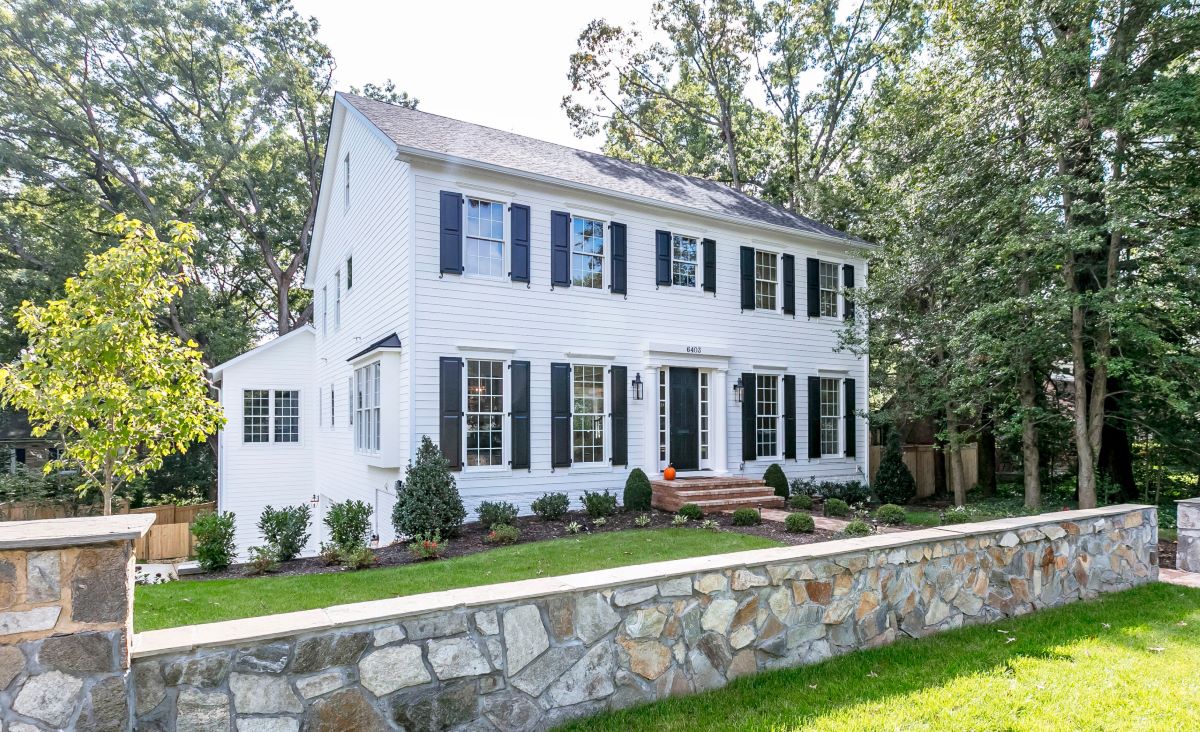

Articles
Two Story Home Remodeling
Modified: January 19, 2024
Looking for expert advice on two-story home remodeling? Check out our informative articles packed with tips and inspiration for your next renovation project.
(Many of the links in this article redirect to a specific reviewed product. Your purchase of these products through affiliate links helps to generate commission for Storables.com, at no extra cost. Learn more)
Introduction
Remodeling your two-story home can be an exciting and transformative experience. Whether you’re looking to update its outdated design, increase functionality, or accommodate a growing family, a well-planned renovation can completely transform your living space.
There are numerous reasons why homeowners choose to embark on a two-story home remodeling project. From increasing property value to expanding living areas, the possibilities are endless. However, undertaking such a significant renovation is a complex task that requires careful planning, skilled professionals, and proper budgeting.
In this article, we will explore the various aspects of remodeling a two-story home, including planning the project, hiring a contractor, budgeting, obtaining permits, and executing both exterior and interior renovations. We will also delve into considerations for adding a second story, structural enhancements, plumbing and electrical upgrades, energy efficiency, flooring and finishings, design and décor, and the finishing touches that add the perfect touch of style to your renovated space.
So, let’s dive in and discover how you can turn your two-story home into the dream space you’ve always envisioned.
Key Takeaways:
- Proper planning, collaboration with professionals, and attention to detail are crucial for a successful two-story home remodeling project. From defining goals to adding finishing touches, each step contributes to creating a dream home.
- Enhancing insulation, energy efficiency, and incorporating personal touches are essential for transforming a two-story home. Carefully curated design and décor choices, along with the final finishing touches, add character and style to the living space.
Read more: How To Build A Two-Story Shed
Reasons for Remodeling
There are countless reasons why homeowners decide to embark on a two-story home remodeling project. Whether it’s to transform the outdated design, increase functionality, or accommodate a growing family, a well-executed renovation can breathe new life into your home. Here are some common reasons why people choose to remodel their two-story homes:
- Improved Functionality: Over time, your home may no longer meet your needs. You might find that the layout is impractical, the storage space is insufficient, or the rooms do not serve their intended purpose. By remodeling, you can reconfigure the space to maximize functionality and create a more efficient and comfortable living environment.
- Increased Property Value: Renovating your two-story home can significantly increase its market value. Updating key areas such as the kitchen, bathrooms, and adding additional living spaces can make your home more appealing to potential buyers, should you decide to sell in the future.
- Energy Efficiency: Investing in energy-efficient upgrades during a remodel not only reduces your environmental impact but also lowers your utility bills. Upgrades such as insulation, LED lighting, and energy-efficient appliances can help save on energy costs and improve overall comfort.
- Creating Additional Space: As your family grows, you may find yourself in need of extra space. Whether it’s for a home office, a playroom, or an additional bedroom, a remodel can provide you with the space you need without the hassle of moving to a new house.
- Enhancing Curb Appeal: The exterior of your home is the first thing people see. Aesthetically pleasing and well-maintained exteriors not only make a lasting impression but can also increase the value of your property. Remodeling the exterior can involve updating the siding, roofing, windows, doors, landscaping, and creating outdoor living spaces.
- Modernization: If your two-story home is stuck in a time warp with outdated design and fixtures, a renovation can bring it into the modern era. From open-concept layouts to contemporary finishes, remodeling can give your home a fresh and stylish makeover.
When considering a two-story home remodeling project, it’s essential to identify your specific goals and priorities. Understanding why you want to remodel will help guide your decisions throughout the process and ensure that the final result aligns with your vision.
Planning the Remodeling Project
Proper planning is the foundation of a successful two-story home remodeling project. Taking the time to plan and strategize before diving into the renovation process will save you time, money, and potential headaches down the line. Here are some crucial steps to consider when planning your remodeling project:
- Define Your Goals: Begin by clearly defining your remodeling goals. Decide which areas of your home you want to renovate, what improvements you want to make, and what your budget constraints are. Having a clear vision of your desired outcome will guide your decision-making process throughout the project.
- Set a Realistic Budget: Determine how much you are willing to invest in your two-story home remodel. Research the average costs for similar projects in your area and consider consulting with a contractor or architect to get an accurate estimate. Be sure to factor in unexpected expenses, such as permit fees or unforeseen issues that may arise during the renovation process.
- Research and Gather Inspiration: Browse through home improvement magazines, websites, and social media platforms to gather inspiration for your remodeling project. Create a mood board or folder to compile ideas and design elements that appeal to you. This will help you communicate your vision to contractors and designers involved in the project.
- Hire Professionals: Unless you are an experienced contractor or architect, it is advisable to work with professionals who specialize in home remodeling. Research and interview multiple contractors to find the right fit for your project. Check their credentials, portfolio, and client reviews to ensure their expertise matches your requirements.
- Create a Timeline: Establish a realistic timeline for your remodeling project. Consider the scope of work, potential delays, and any specific time constraints you may have. Having a timeline will help you stay organized and ensure that the project progresses smoothly.
- Obtain Permits and Approvals: Check with your local building department to determine what permits are required for your specific remodeling project. Depending on the scope and nature of the renovation, you may need permits for structural changes, electrical work, plumbing, or even for exterior modifications.
- Collaborate with Design Professionals: If you’re looking to make substantial design changes to your two-story home, consider working with an interior designer or architect. They can help you create detailed plans, optimize space utilization, and make informed design choices that align with your aesthetic preferences.
Remember, the planning phase sets the stage for a successful remodeling project. Take the time to thoroughly plan and prepare, and don’t hesitate to seek professional guidance when needed. With a well-thought-out plan, you can ensure a smoother renovation journey and achieve the results you desire for your two-story home.
Hiring a Contractor
One of the most important decisions you’ll make during your two-story home remodeling project is selecting the right contractor. Hiring a reputable and reliable contractor is crucial to the success of your renovation and ensuring that your vision is brought to life. Here are some steps to consider when hiring a contractor:
- Ask for Recommendations: Begin by asking for recommendations from friends, family, or neighbors who have recently undergone home renovations. They can provide valuable insights and referrals based on their personal experiences.
- Do Your Research: Conduct thorough research on potential contractors. Check their credentials, licenses, and insurance coverage. Look for online reviews and testimonials to gauge their reputation and the quality of their work.
- Interview Multiple Contractors: Once you have a shortlist of potential contractors, interview each one to learn more about their expertise, communication style, and work process. Ask about their previous experience with similar projects and request references to speak with past clients.
- Review Portfolios: Take the time to review each contractor’s portfolio. Look for projects that align with your vision and aesthetic preferences. Pay attention to the quality of workmanship, attention to detail, and overall design appeal.
- Check Licenses and Insurance: Verify that the contractor holds all necessary licenses and permits required for your specific renovation project. Additionally, ensure they have liability insurance and workers’ compensation coverage to protect you from any liabilities or accidents that may occur during the construction process.
- Obtain Multiple Bids: Request detailed bids from your top contractors. The bids should include a breakdown of labor costs, materials, project timelines, and any additional expenses. By comparing multiple bids, you can ensure you’re getting a fair and competitive price.
- Ask for a Contract: Once you’ve selected a contractor, make sure to get a written contract that outlines all aspects of the project, including a detailed scope of work, payment schedule, and project timeline. Review the contract carefully before signing and ask for clarification on any unclear items.
- Communicate Effectively: Establish clear lines of communication with your chosen contractor. Regularly communicate your expectations, concerns, and any changes you may want to make. Maintaining open and honest communication throughout the project will help prevent misunderstandings and ensure everyone is on the same page.
Remember, hiring the right contractor is a critical step in the remodeling process. Take the time to thoroughly research and interview potential contractors, checking their credentials and portfolio, obtaining multiple bids, and ensuring effective communication. By making an informed decision, you’ll have confidence in the contractor’s ability to successfully bring your two-story home remodeling project to life.
Budgeting for the Project
Creating a realistic budget for your two-story home remodeling project is essential to ensure that the renovation stays within your financial means. Without proper budgeting, costs can quickly spiral out of control and lead to unnecessary stress and financial strain. Here are some steps to help you effectively budget for your project:
- Assess Your Finances: Begin by evaluating your current financial situation. Determine how much you can comfortably afford to allocate towards the renovation without jeopardizing your other financial obligations.
- Define Your Priorities: Decide which areas of your home are the most important to you and allocate a larger portion of your budget to those spaces. For instance, if updating the kitchen is a top priority, allocate more funds towards that part of the project.
- Research Costs: Research the average costs of two-story home renovations in your area. Take into account factors such as labor, materials, permits, and any additional expenses you may incur, such as temporary housing during the renovation.
- Obtain Multiple Bids: Request detailed bids from contractors for your specific project. Comparing multiple bids will give you a better understanding of the range of costs and help you identify any potential discrepancies.
- Account for Unexpected Expenses: It’s essential to allocate a contingency fund for any unexpected costs that may arise during the renovation process. It’s not uncommon for unforeseen issues to surface, such as hidden structural damage or the need for additional plumbing or electrical work.
- Consider Financing Options: If your budget falls short of your vision for the project, consider financing options such as home equity loans or lines of credit. Be sure to assess the financial impact of borrowing and ensure that you can comfortably repay the loan without straining your budget.
- Prioritize Value-Adding Investments: Allocate a portion of your budget towards investments that will significantly increase the value of your home. This could include upgrading key areas such as the kitchen or bathrooms, improving energy efficiency, or enhancing curb appeal.
- Track Expenses: Keep a close eye on your expenses throughout the renovation process. Regularly review your budget and track your spending to ensure you’re staying on track and making informed decisions about where to allocate your funds.
- Communication with Contractor: Maintain open communication with your contractor about your budget limitations. They can provide guidance on cost-saving measures, alternative options, and help you prioritize your spending.
Remember, proper budgeting is crucial to the success of your two-story home remodeling project. By assessing your finances, defining priorities, researching costs, obtaining multiple bids, accounting for unexpected expenses, considering financing options, and tracking expenses, you can ensure that your renovation stays within your budget while achieving your desired outcome.
Read more: How To Design A Small Two-Story House
Obtaining Permits and Approvals
When undertaking a two-story home remodeling project, it is essential to understand and follow the local building codes and regulations. Obtaining the necessary permits and approvals is crucial to ensure that your renovation complies with safety standards and zoning requirements. Here are the steps involved in obtaining permits and approvals:
- Research Local Building Codes: Begin by researching the building codes and regulations specific to your area. Contact your local building department or visit their website to understand the requirements for your two-story home remodeling project.
- Determine Required Permits: Identify which permits are necessary for your renovation. These could include permits for structural changes, electrical work, plumbing, HVAC modifications, and even exterior modifications like adding a deck or a patio.
- Submit Permit Applications: Fill out the permit applications accurately and provide all the required information. This may include detailed plans, specifications, contractor information, and any other documentation requested by the building department.
- Pay Permit Fees: Some permits require payment of fees, which vary depending on the nature and scope of the project. Ensure that you include the appropriate fees along with your permit applications.
- Review Process: After submitting your permit applications, they will go through a review process by the building department. This may involve checking if the renovation plans adhere to the building codes and regulations in your area.
- Obtain Approvals: Once your permit applications pass the review process, you will receive approvals. These approvals serve as official documentation allowing you to proceed with the renovation project.
- Display Permits: Once you receive the permits, make sure to display them prominently at the job site. This informs inspectors and officials that the renovation is taking place legally and in compliance with the approved plans.
- Schedule Inspections: During the remodeling process, you will need to schedule inspections at various stages of the project. Inspectors will visit the site to ensure that the work is being done according to the approved plans and in accordance with the building codes.
- Address Any Issues: If any issues or violations are identified during inspections, work with your contractor to rectify them promptly. Failure to address the issues may result in fines, or in some cases, have the renovation halted until the problems are resolved.
- Final Inspections and Certificates of Occupancy: Once the renovation is complete, schedule a final inspection with the building department. If all requirements are met, you will receive a Certificate of Occupancy, indicating that your two-story home meets all safety standards and is ready to be occupied.
Obtaining permits and approvals may seem like a tedious process, but it is essential to ensure that your two-story home remodeling project complies with building codes and regulations. By following the necessary steps, you can proceed with your renovation confidently, knowing that it is being done safely and legally.
Exterior Renovations
Exterior renovations are an excellent way to enhance the curb appeal and functionality of your two-story home. Whether you want to update the facade, improve the outdoor living spaces, or increase energy efficiency, there are various exterior remodeling options to consider. Here are some key exterior renovation ideas for your two-story home:
- Siding Upgrade: Replace outdated or worn siding with a new, durable material that complements the architectural style of your home. Popular options include vinyl, fiber cement, and natural wood siding.
- Roofing Replacement: Consider replacing an old or damaged roof with new, energy-efficient roofing materials. Asphalt shingles, metal roofs, and clay tiles are popular choices that offer both functionality and aesthetic appeal.
- Window and Door Updates: Install energy-efficient windows and doors to improve insulation and reduce energy costs. Opt for styles that match the overall design and complement the architectural features of your two-story home.
- Outdoor Living Spaces: Enhance your outdoor living experience by creating functional and inviting spaces. Install a patio, deck, or outdoor kitchen for entertaining, and consider adding landscaping elements such as gardens, pathways, or water features.
- Garage Remodel: If you have a detached or attached garage, consider renovating it to match the design and style of your home. This can involve updating the doors, windows, and interior finishes, as well as adding storage solutions.
- Entryway Makeover: Create an impressive entryway by updating the front door, adding decorative elements such as columns or porch railings, and improving the landscaping around the entrance.
- Energy Efficiency: Increase the energy efficiency of your two-story home by adding insulation, installing energy-efficient windows, and implementing sustainable features such as solar panels or a rainwater harvesting system.
- Exterior Lighting: Illuminate your outdoor space with creative and practical lighting solutions. This can include pathway lighting, accent lighting for architectural features, or motion-activated security lighting.
- Paint or Stain: Consider refreshing the exterior with a fresh coat of paint or stain. Choose colors that complement the architectural style of your home and create a cohesive look.
- Landscaping Enhancements: Improve the overall appeal of your two-story home by updating the landscaping. This can involve planting new trees, shrubs, and flowers, as well as adding hardscape elements like stone walkways or a decorative fence.
Remember, when planning exterior renovations, consider the architectural style of your home, local regulations, and your budget. Consulting with a professional designer or contractor can help you maximize the functionality and aesthetic appeal of your two-story home’s exterior. With the right exterior renovations, you can transform your home’s appearance and create a welcoming and beautiful facade.
Interior Renovations
When it comes to interior renovations for your two-story home, the possibilities are endless. Whether you want to update the kitchen, transform the bathrooms, or give the living areas a fresh look, interior renovations can completely transform the look and feel of your home. Here are some key interior renovation ideas to consider:
- Kitchen Remodel: The kitchen is often the heart of the home. Consider updating cabinets, countertops, and appliances to create a functional and stylish space. Add a kitchen island or create an open-concept layout for a modern and spacious feel.
- Bathroom Renovation: Upgrade outdated bathrooms with new fixtures, tiles, and vanities. Consider adding luxurious features like a walk-in shower, soaking tub, or double sinks for added convenience and comfort.
- Living Room Transformation: Give your living room a makeover by updating the flooring, replacing worn-out furniture, and incorporating stylish elements like a fireplace or built-in shelving. Create a cozy and inviting space for relaxation and entertainment.
- Bedroom Upgrades: Update your bedrooms to create a tranquil and comfortable retreat. Consider adding built-in storage solutions, installing new flooring, and updating the lighting fixtures for a cozy and personalized space.
- Home Office Conversion: Transform a spare room or underutilized space into a functional home office. Incorporate built-in shelves, a dedicated workspace, and proper lighting for maximum productivity.
- Open-Concept Layout: If your two-story home has separate rooms that feel closed off, consider removing walls to create an open-concept layout. This can enhance natural light, improve flow, and create a more spacious and connected living space.
- Flooring Upgrade: Replace old or worn-out flooring with new options that suit your style and lifestyle. Choose from hardwood, laminate, vinyl, or tile flooring to create a cohesive and visually appealing look throughout your home.
- Lighting and Fixtures: Update outdated lighting fixtures with modern, energy-efficient options. Incorporate both ambient and task lighting to enhance the functionality and ambiance of each room.
- Smart Home Integration: Embrace technology by incorporating smart home features into your renovation. Install smart thermostats, lighting controls, and security systems to enhance convenience and energy efficiency.
- Energy Efficiency: Consider incorporating energy-efficient upgrades into your renovation, such as insulation, high-efficiency appliances, and programmable thermostats. This can help reduce utility bills and lessen your environmental impact.
When planning interior renovations, make sure to consider your personal preferences, lifestyle, and budget. Consult with professionals such as interior designers or contractors to ensure that the renovations align with your vision and are implemented efficiently. With the right interior renovations, you can create a comfortable, functional, and beautiful space that reflects your personal style and enhances the overall enjoyment of your two-story home.
When remodeling a two-story home, consider the structural integrity of the building. Consult with a professional to ensure that any changes or additions are safe and up to code.
Adding a Second Story
If you’re in need of additional space in your two-story home, adding a second story can be a practical and cost-effective solution. This type of major renovation can significantly increase the square footage of your home, providing extra rooms and living areas. Here are some key considerations when adding a second story:
- Structural Assessment: Before proceeding with the project, hire a structural engineer to assess the foundation and structure of your existing home. They will determine if the current foundation and structure can support the added weight of a second story.
- Design and Permits: Work with an architect or designer to create detailed plans for the second-story addition. They will consider factors such as layout, functionality, and aesthetic coherence with the existing home. Once the plans are finalized, you will need to obtain the necessary permits from your local building department.
- Budgeting and Financing: Adding a second story is a significant investment, so it’s crucial to establish a realistic budget for the project. Consider factors such as construction costs, design fees, permits, and any unexpected expenses that may arise. Explore financing options if needed, such as home equity loans or lines of credit.
- Building Codes and Regulations: Familiarize yourself with the local building codes and regulations that apply to adding a second story. This includes requirements for setback distances, height restrictions, fire safety, and insulation standards. Your architect or contractor should be well-versed in these regulations.
- Temporary Housing: Depending on the scale of the renovation, you may need to temporarily relocate while the second story is being constructed. Factor in the cost of temporary housing in your budget and determine the duration of the construction process.
- Integration with Existing Structure: A seamless integration between the existing home and the second story is important for both structural stability and aesthetic appeal. Work closely with your architect to ensure a harmonious blend of the old and new. This includes matching exterior finishes, blending interior details, and ensuring smooth transitions between existing and new spaces.
- Plumbing and Electrical Systems: Adding a second story may require upgrading the plumbing and electrical systems in your home. Consider any changes or additions that need to be made to accommodate the new space and consult with professionals to ensure compliance with building codes and safety regulations.
- Timeframe and Construction Process: Understand that adding a second story is a complex project that requires proper planning and coordination. Work closely with your contractor to establish a realistic construction timeline and ensure that all necessary permits and inspections are scheduled accordingly.
- Energy Efficiency: Take advantage of the second-story addition to improve the energy efficiency of your home. Consider adding insulation, energy-efficient windows, and updated HVAC systems to enhance comfort and reduce utility costs.
- Design and Functionality: Plan the layout of the second story carefully to optimize space utilization and functionality. Consider the needs of your household and incorporate features such as additional bedrooms, bathrooms, a home office, or a recreational area.
Adding a second story to your two-story home can provide much-needed space and enhance its overall value. However, it’s important to approach this type of renovation with careful planning, consideration of regulations, and collaboration with professionals. By doing so, you can successfully expand your home and create a functional and beautiful living space that meets your evolving needs.
Structural Considerations
When planning any major renovation, including adding a second story to your two-story home, it’s essential to carefully consider the structural aspects of the project. Ensuring that the existing structure can support the added weight and making necessary adjustments is crucial for the stability and integrity of your home. Here are some key structural considerations when adding a second story:
- Consult a Structural Engineer: Before proceeding with the project, hire a licensed structural engineer to assess the structural capacity of your existing home. They will evaluate the foundation, load-bearing walls, and other elements to determine if they can support the additional weight of the second story.
- Foundation Assessment: The foundation is the base of your home’s structure. The engineer will examine its current condition and determine if any repairs or reinforcements are necessary to handle the increased load from the second story. This may involve underpinning or adding additional support columns or beams.
- Load-Bearing Walls: Identify the load-bearing walls in your existing home. These walls carry the weight of the structure above. If the second story requires modifications to these walls, adequate measures must be taken to redistribute the weight and ensure structural stability. This can involve adding additional support, such as beams or columns.
- Vertical Support: Adding a second story will increase the vertical load on the lower level of your home. The engineer will assess whether the existing columns and supports are sufficient to handle the additional weight. In some cases, it may be necessary to reinforce or replace these elements to ensure adequate support and prevent structural damage.
- Roof Structure: Consider the impact of adding a second story on your roof structure. The engineer will assess if any adjustments need to be made to support the new load and ensure that the roof remains watertight and structurally sound. This may involve reinforcing or modifying roof trusses or adding new load-bearing walls.
- Connections and Fastening: Proper connections and fastening between the existing structure and the second story are crucial for structural integrity. The engineer will determine the most appropriate methods to ensure a secure and durable connection, such as using structural steel connectors, bolts, or specialized fasteners.
- Building Code Compliance: Ensure that the structural modifications for the second story addition comply with local building codes and regulations. These codes set standards for safety, load capacity, fire resistance, and structural performance. Your engineer and contractor should be familiar with these codes and incorporate them into the design and construction process.
- Fire Safety: Consider fire safety measures when adding a second story. This may include installing fire-resistant materials, proper fire-rated walls and doors, and ensuring proper egress routes in case of an emergency. Compliance with fire safety codes is crucial to protect your home and its occupants.
- Consult with Professionals: Structural modifications should always be handled by qualified professionals. Work closely with a licensed structural engineer and experienced contractors who specialize in home renovations. Their expertise will ensure that your project meets all safety requirements, and the structural considerations are addressed effectively.
Structural considerations are of utmost importance when adding a second story to your two-story home. Collaborating with a structural engineer and experienced professionals will ensure that the necessary adjustments are made to support the added weight and maintain the integrity of your home. By addressing these structural aspects, you can embark on your renovation project with confidence, knowing that your home will remain safe and stable for years to come.
Plumbing and Electrical Upgrades
When undergoing a two-story home remodeling project, it’s important to consider the plumbing and electrical systems. Upgrading these systems ensures they can meet the demands of the additional space and modern living requirements. Here are some key considerations for plumbing and electrical upgrades:
- Assess Existing Systems: Start by evaluating the current plumbing and electrical systems in your home. Determine if they can accommodate the needs of both the existing and new spaces. This includes assessing the capacity of pipes, wiring, outlets, and circuits.
- Consult Professionals: Hire licensed plumbers and electricians to conduct a thorough inspection and provide expert guidance. They will assess the condition and functionality of the existing systems and recommend any necessary upgrades or modifications.
- Increased Water Demand: Adding a second story means more bathrooms, sinks, and potentially an expanded kitchen. Ensure that your plumbing system can handle the increased water demand. This may involve upgrading the main water supply line, increasing pipe sizes, or adding separate water lines.
- Drainage and Ventilation: Consider the impact of the added plumbing fixtures on your drainage and ventilation systems. Ensure that the existing sewer lines, vents, and drainage pipes can efficiently handle the additional load. This may require adding new venting options and making adjustments to the layout of drainage lines.
- Electrical Capacity: Assess the electrical capacity of your home to ensure it can handle the increased demand from the second-story addition. This includes evaluating the main electrical panel, circuits, and wiring. A licensed electrician can determine if any upgrades or additions are necessary to meet the electrical needs of the expanded space.
- Additional Outlets and Lighting: Plan for additional outlets and lighting fixtures to accommodate the new rooms and spaces created by the second-story addition. Strategically placing outlets, switches, and light fixtures will maximize functionality and convenience.
- Code Compliance: Ensure that all plumbing and electrical upgrades comply with local building codes and regulations. This includes meeting safety standards, grounding requirements, and providing proper clearances. Your hired professionals will ensure that all work is done in accordance with the relevant codes.
- Energy Efficiency: Take the opportunity to enhance energy efficiency during the plumbing and electrical upgrades. Install energy-efficient fixtures, such as low-flow toilets, faucets, and LED lighting. Consider adding smart home features, like programmable thermostats or motion sensor lights, to reduce energy consumption.
- Permits and Inspections: Obtain any required permits for plumbing and electrical work and ensure that all installations undergo proper inspections. Compliance with the local building department ensures the safety and quality of the work done.
- Partner with Professionals: Plumbing and electrical upgrades require specialized knowledge and expertise. Collaborate with licensed plumbers and electricians who have experience with home remodeling projects. Their expertise will ensure that the upgrades are done correctly and up to code.
Plumbing and electrical upgrades are essential when adding a second story to your two-story home. By evaluating the existing systems, consulting professionals, assessing the demand and capacity, complying with codes, and investing in energy efficiency, you can ensure that your home’s plumbing and electrical systems can handle the increased needs of your renovated space. With professional guidance and attention to these upgrades, you can enjoy a safe, efficient, and functional home for years to come.
Insulation and Energy Efficiency
When undergoing a two-story home remodeling project, it is essential to prioritize insulation and energy efficiency. Improving insulation and making energy-efficient upgrades not only reduce utility costs but also enhance comfort and contribute to a more environmentally sustainable home. Here are some key considerations for insulation and energy efficiency:
- Evaluate Existing Insulation: Begin by assessing the current insulation in your home. Determine if it meets minimum insulation standards and if there are any areas that require additional insulation. Common areas for insulation include attics, exterior walls, floors, and crawl spaces.
- Insulation Types: Research the various insulation options available, such as fiberglass, spray foam, cellulose, or rigid foam boards. Consider factors such as insulation R-value, moisture resistance, and compatibility with your home’s structure.
- Address Air Leaks: Identify and seal any air leaks in your home. These can be found around windows, doors, electrical outlets, and gaps in the building envelope. Proper air sealing can improve energy efficiency by preventing drafts and heat loss.
- Upgrade Windows and Doors: If your windows and doors are outdated or poorly insulated, consider upgrading to energy-efficient options. Look for products with Low-E coatings, multiple panes, and good weatherstripping to minimize heat transfer and improve insulation.
- Consider Roof Insulation: Roof insulation plays a crucial role in energy efficiency. Consider adding insulation to your attic or roof space to minimize heat gain in the summer and heat loss in the winter. This will help maintain a comfortable indoor temperature year-round.
- Efficient HVAC System: Upgrade your heating, ventilation, and air conditioning (HVAC) system to a more energy-efficient model. Look for units with a high Seasonal Energy Efficiency Ratio (SEER) rating and programmable thermostats to optimize energy usage.
- Lighting Upgrades: Replace traditional incandescent light bulbs with energy-efficient options like LED bulbs. LED lighting consumes less energy, lasts longer, and generates less heat, making it an excellent choice for energy-conscious homeowners.
- Appliance Efficiency: Upgrade old appliances to energy-efficient models with a high Energy Star rating. This includes refrigerators, dishwashers, washing machines, and dryers, which can significantly reduce energy consumption and lower utility bills.
- Implement Smart Technology: Consider integrating smart home technology to optimize energy efficiency. Install programmable thermostats, smart lighting systems, and energy monitoring devices to have better control over energy usage and make adjustments for maximum efficiency.
- Insulate Plumbing and Ducts: Insulate exposed plumbing pipes and HVAC ductwork to minimize heat transfer and reduce energy loss. This ensures that hot water stays hot, and conditioned air is properly distributed throughout the home.
Enhancing insulation and energy efficiency during a two-story home remodeling project offers long-term benefits. By evaluating insulation, addressing air leaks, upgrading windows and doors, improving roof insulation, upgrading HVAC systems and appliances, implementing smart technology, and insulating plumbing and ductwork, you can create a comfortable, energy-efficient, and eco-friendly living space. Consulting with professionals who specialize in energy-efficient upgrades can help you make informed decisions and maximize the energy-saving potential in your home.
Flooring and Finishings
Choosing the right flooring and finishings is crucial to achieving the desired aesthetic and functionality for your two-story home remodeling project. From durable and stylish floors to elegant finishes, these elements contribute to the overall look and feel of your home. Here are some key considerations for flooring and finishings:
- Flooring Options: Explore flooring options that suit your style and lifestyle. Common choices include hardwood, laminate, tile, vinyl, and carpet. Consider factors such as durability, maintenance requirements, comfort, and budget.
- Room-Specific Flooring: Adapt the flooring choices to suit the different rooms in your home. For high-traffic areas like entryways and living rooms, consider durable and scratch-resistant materials. In bathrooms and kitchens, opt for moisture-resistant options.
- Cohesive Design: Ensure a cohesive and harmonious design by selecting flooring options that complement each other throughout your two-story home. Create a seamless flow by choosing similar colors, textures, or finishes.
- Finishing Touches: Pay attention to the small details that elevate the overall look of your home. Choose baseboards, crown molding, and trim that complement the style of your rooms. Consider finishes such as wallpaper or paint colors that add depth and character to your walls.
- Staircase Enhancements: If your two-story home has a staircase, consider enhancing its appearance. Install stylish railing and balusters that match the overall design aesthetics. Consider carpeting or adding a runner for added safety and comfort.
- Tile Selection: Tiles offer versatility and durability for areas such as kitchens, bathrooms, and entryways. Choose from an array of styles, sizes, and patterns to add visual interest and create a stunning focal point.
- Carpeting: Carpet adds warmth and comfort to bedrooms, living rooms, and other areas where comfort is essential. Choose a carpet type that is durable, stain-resistant, and fits your desired level of softness.
- Hardwood and Laminate: Hardwood and laminate flooring create a timeless and elegant look. Choose different wood species, finishes, and plank sizes to achieve your desired aesthetic. Laminate flooring offers a more budget-friendly alternative with excellent durability and versatility.
- Tile and Natural Stone: Tiles and natural stone materials provide a luxurious and durable option for high-traffic areas. Consider porcelain, ceramic, or natural stone tiles such as marble or granite for a stunning and practical flooring choice.
- Countertop Selection: When it comes to kitchen and bathroom remodeling, select countertops that are both functional and aesthetically pleasing. Common options include quartz, granite, marble, or solid surface materials, each with its own advantages in terms of durability and style.
- Lighting Fixtures: Don’t overlook the impact of lighting fixtures on your flooring and finishings. Install fixtures that enhance the visibility and ambiance of your space. Consider pendant lights, chandeliers, recessed lighting, or wall sconces to add both style and functionality.
When selecting flooring and finishings, consider the overall style and functionality of your two-story home. Explore different options, consult professionals for expert advice, and choose materials, colors, and textures that align with your vision. With careful attention to flooring and finishings, you can create a cohesive and visually appealing living environment that suits your lifestyle and reflects your personal style.
Design and Décor
When it comes to two-story home remodeling, design and décor play a significant role in creating a space that reflects your personal style and enhances the overall aesthetics. Every design choice, from colors and furniture to accessories and artwork, contributes to the atmosphere and functionality of your home. Here are some key considerations for design and décor:
- Define Your Style: Determine the overall design style that resonates with you. Whether you prefer modern, traditional, farmhouse, Scandinavian, or eclectic, choose a cohesive style that will guide your design decisions throughout the project.
- Color Palette: Select a color palette that reflects your desired ambiance and complements the style of your home. Consider the emotional impact of colors and choose hues that evoke the mood you want to create in each space.
- Furniture Selection: Choose furniture that is both functional and aesthetically pleasing. Consider the size and layout of each room and select pieces that fit well while delivering on comfort and style. Balance between statement pieces and functional items to create a harmonious and inviting atmosphere.
- Lighting: Incorporate a mix of ambient, task, and accent lighting to create depth and enhance the functionality of each space. Consider the use of natural light and install appropriate fixtures such as chandeliers, pendants, recessed lighting, and wall sconces to highlight architectural features and add a touch of elegance.
- Window Treatments: Choose window treatments that provide privacy, control natural light, and enhance the overall design. Consider options such as curtains, drapes, blinds, or shades that align with the room’s style and offer the desired level of light control and privacy.
- Textiles and Fabrics: Incorporate textiles and fabrics to add texture, warmth, and visual interest. Explore options such as curtains, rugs, throw pillows, and upholstery to enhance the overall design and create a cozy and inviting atmosphere.
- Artwork and Accessories: Personalize your space with artwork, decorative objects, and accessories that reflect your personality and interests. Select pieces that complement the overall design and add a personal touch to each room.
- Flooring Selection: Choose flooring materials, patterns, and finishes that complement the overall design and tie the rooms together. Consider how different flooring choices will flow from one space to another, creating a cohesive and visually appealing transition throughout your two-story home.
- Storage Solutions: Maximize storage space by incorporating functional and stylish storage solutions. This can include built-in cabinets, shelves, and drawers to declutter and maintain an organized living environment.
- Emphasis on Detail: Pay attention to small details that can elevate the design and décor of your home. Consider architectural elements, such as crown molding or wainscoting, as well as hardware, handles, and knobs that add a touch of elegance.
- Minimalism and Space Optimization: Embrace a minimalist approach to design, focusing on clean lines, limited clutter, and optimizing the use of space. This allows for a more open and airy feel, enhancing the overall aesthetic appeal of your home.
Design and décor choices are vital in creating a two-story home that reflects your personal style and enhances the functionality of each space. Take the time to define your style, consider the color palette, choose furniture and lighting that adds character and functionality, and pay attention to details that create a cohesive and visually appealing environment. With thoughtful design selections and a well-curated décor, you can create a space that truly feels like home.
Finishing Touches
When it comes to completing your two-story home remodeling project, it’s the finishing touches that add the final layer of elegance and personality to your space. These small details and thoughtful additions can transform a house into a home. Here are some key finishing touches to consider:
- Window Treatments: Install window treatments that not only provide privacy and light control but also add a touch of style and sophistication to each room. Choose curtains, blinds, or shades that complement the overall design and color scheme of the space.
- Accessorize: Add carefully curated accessories to enhance the aesthetic of your home. Consider decorative items like vases, sculptures, candles, or plants that reflect your personal taste and bring life and character to your space.
- Mirrors: Strategically place mirrors in your home to reflect light, create the illusion of space, and add dimension to your rooms. Choose mirrors that come in unique shapes, frames, or sizes to make a stylish statement.
- Hardware: Update hardware on cabinets, doors, and drawers to give your space a fresh and polished look. Choose hardware that complements the overall design aesthetic, whether it’s sleek and modern or classic and ornate.
- Artwork: Hang artwork that speaks to your personal taste and adds visual interest to your walls. Choose pieces that complement the overall color scheme and style of each room, and consider supporting local artists to add a unique and personal touch.
- Lighting Fixtures: Install unique and eye-catching light fixtures as focal points in each room. Choose fixtures that align with your design style and contribute to the overall ambiance, whether it’s a statement chandelier, pendant lights, or wall sconces.
- Statement Furniture: Incorporate a statement piece of furniture that becomes a conversation starter in your home. Whether it’s a bold-colored sofa, an intricately designed coffee table, or an eye-catching accent chair, a statement piece can elevate the style and personality of your space.
- Rugs and Carpets: Place area rugs and carpets to define spaces and add warmth and texture to your floors. Choose rugs that complement the color scheme and design aesthetics of each room, whether it’s a cozy shag rug or a timeless Oriental rug.
- Custom Cabinetry: Consider custom-built cabinetry that meets your specific storage needs and reflects your personal style. Custom cabinetry allows for efficient organization and adds a luxurious, high-end touch to your two-story home.
- Personal Touches: Add personal elements that make your home uniquely yours. Display family photos, cherished mementos, or heirlooms that hold sentimental value. Incorporate items that showcase your hobbies, interests, or travels, adding a personal touch and sparking conversation.
Finishing touches are what truly make your two-story home feel complete. By carefully selecting window treatments, accessories, mirrors, artwork, hardware, lighting fixtures, rugs, and incorporating personal touches, you infuse your home with character and create a space that is a true reflection of your style and personality. Don’t rush the finishing touches – take the time to curate and select items that truly resonate with you, ensuring that your two-story home becomes a place where you feel comfortable, inspired, and proud to call your own.
Conclusion
Embarking on a two-story home remodeling project is an exciting journey that allows you to transform your living space into a dream home. From updating the exterior to enhancing the interior, each step of the process presents an opportunity to create a space that reflects your personal style, meets your functional needs, and adds value to your home.
Throughout the remodeling process, it’s crucial to prioritize careful planning, collaboration with professionals, and attention to detail. Clearly define your goals and budget, research and hire reputable contractors, and obtain the necessary permits and approvals. Consider the structural implications of any additions or modifications, and focus on improving insulation and energy efficiency to create a comfortable and eco-friendly living environment. Pay attention to flooring and finishings, design and décor choices, and add the final finishing touches that truly make your home a reflection of your personality and style.
Remember that a successful two-story home remodeling project requires a balance between functionality and aesthetics. It’s important to create a space that not only looks stunning but also serves the needs of your household. Consulting with professionals, like architects, designers, plumbers, and electricians, will ensure that your remodel is done safely, to code, and in line with your vision.
As you embark on your two-story home remodeling project, enjoy the process and allow your creativity to shine through. With careful planning, attention to detail, and a clear vision, you can transform your existing home into a beautiful and functional living space that brings you joy for years to come.
Frequently Asked Questions about Two Story Home Remodeling
Was this page helpful?
At Storables.com, we guarantee accurate and reliable information. Our content, validated by Expert Board Contributors, is crafted following stringent Editorial Policies. We're committed to providing you with well-researched, expert-backed insights for all your informational needs.
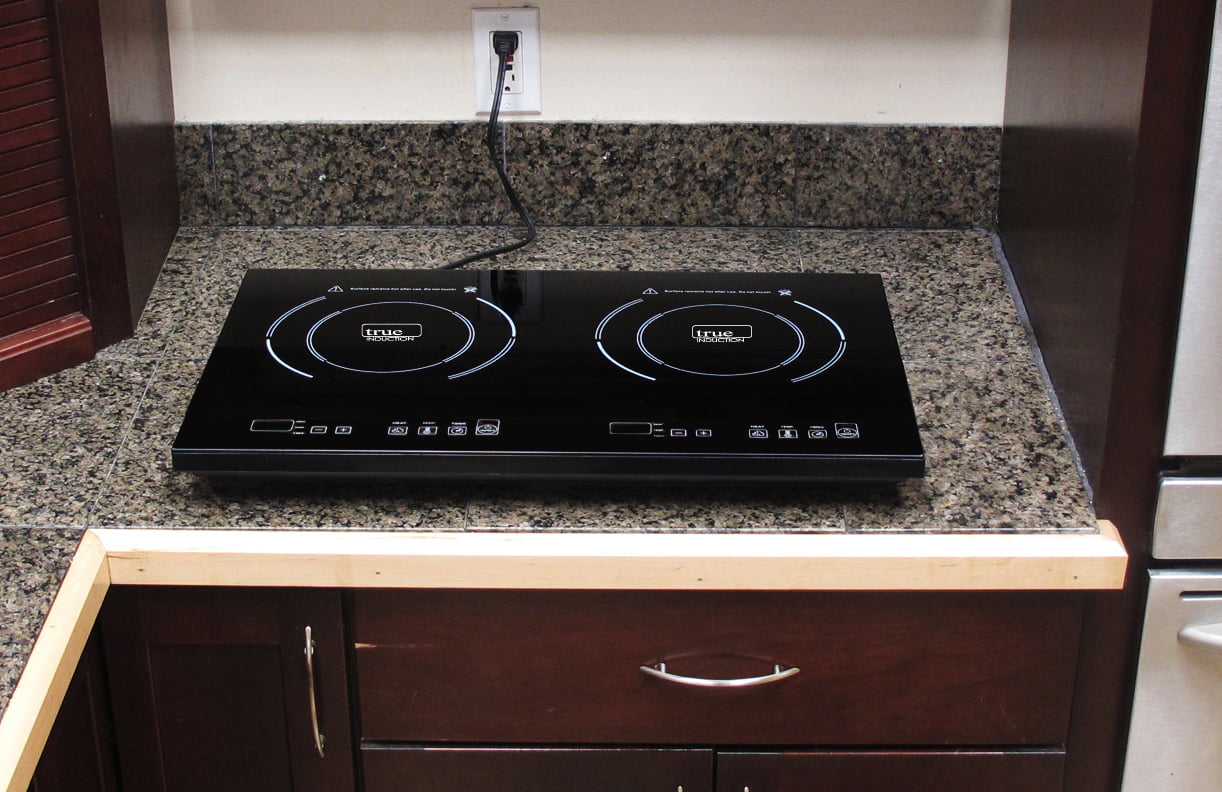
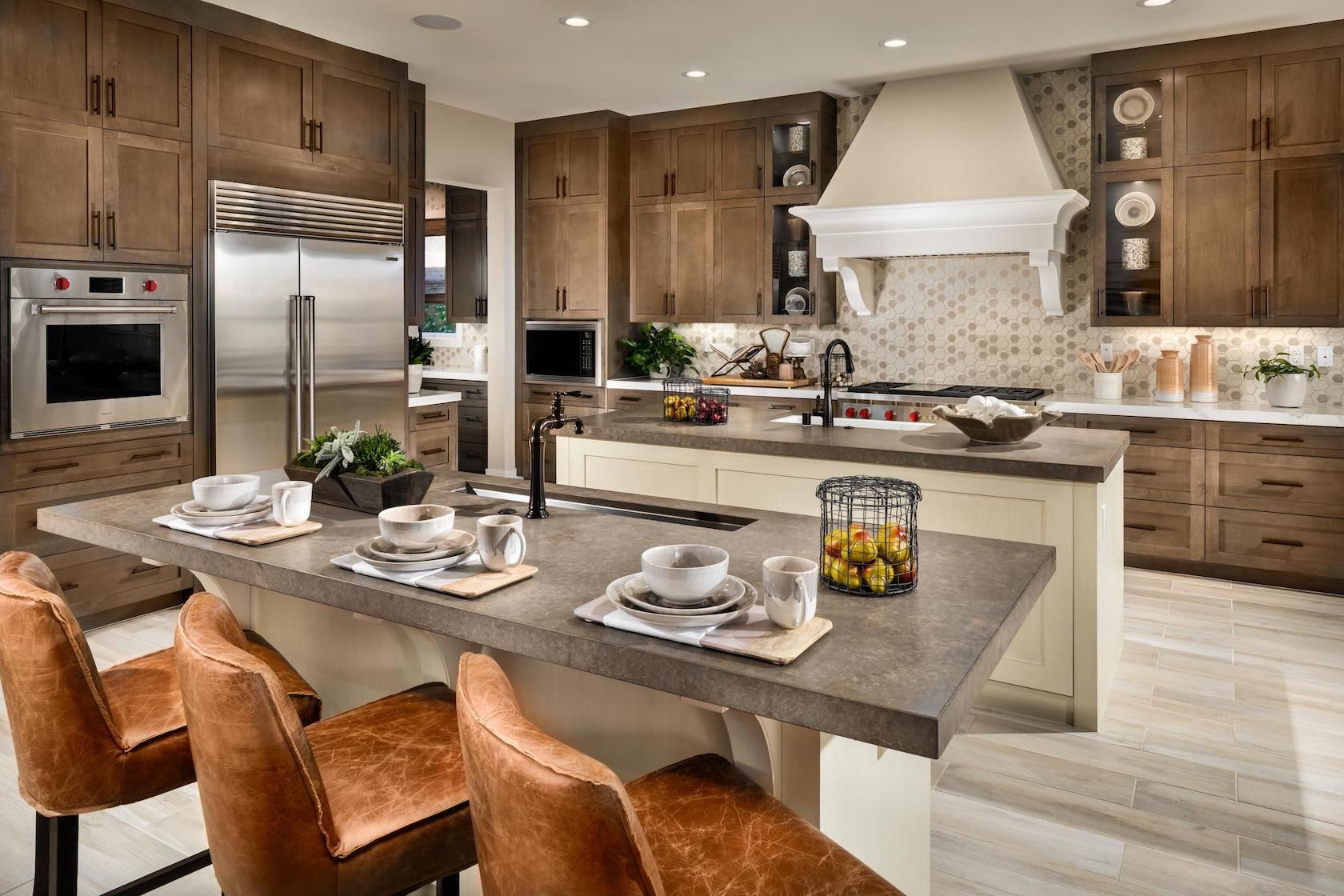

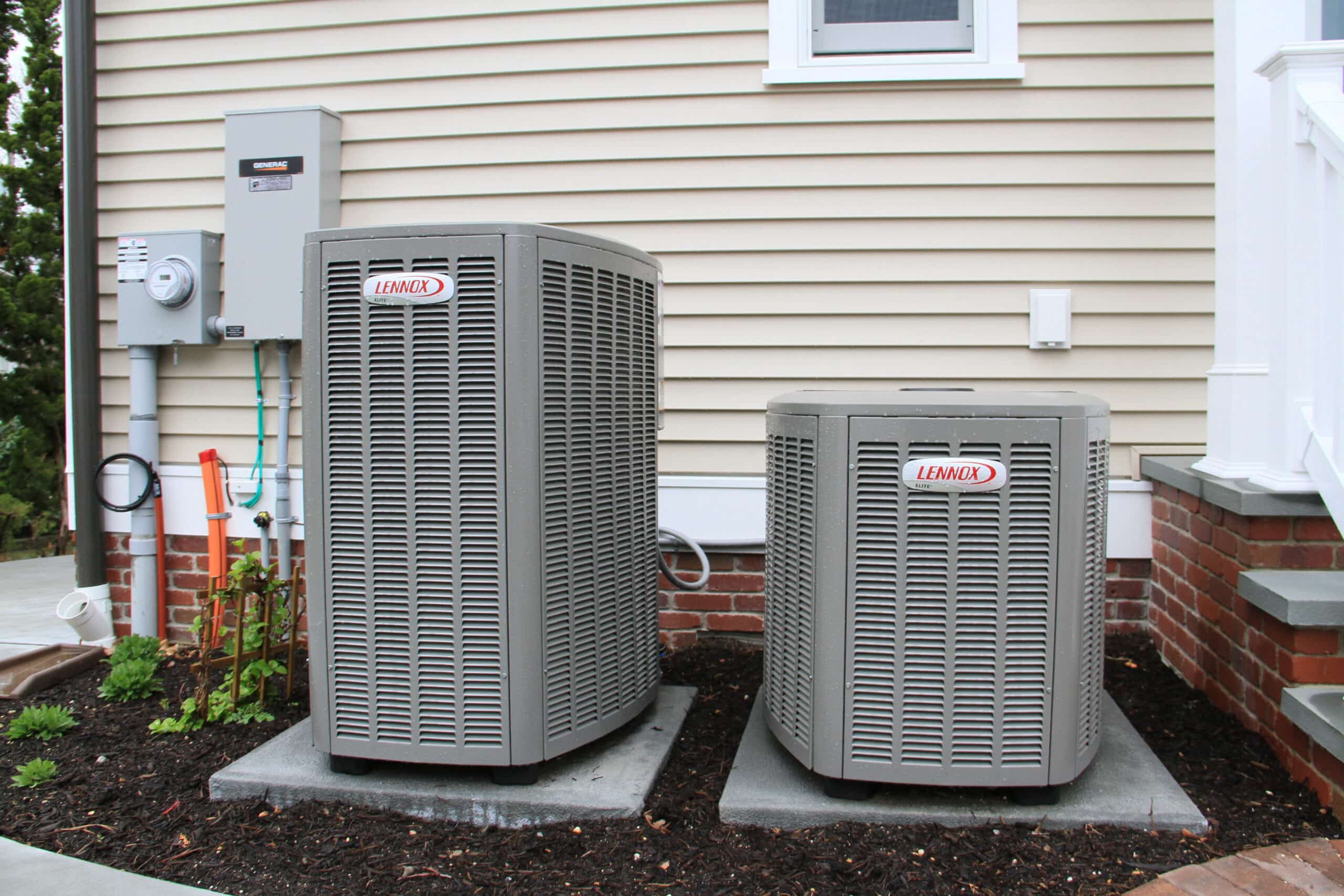

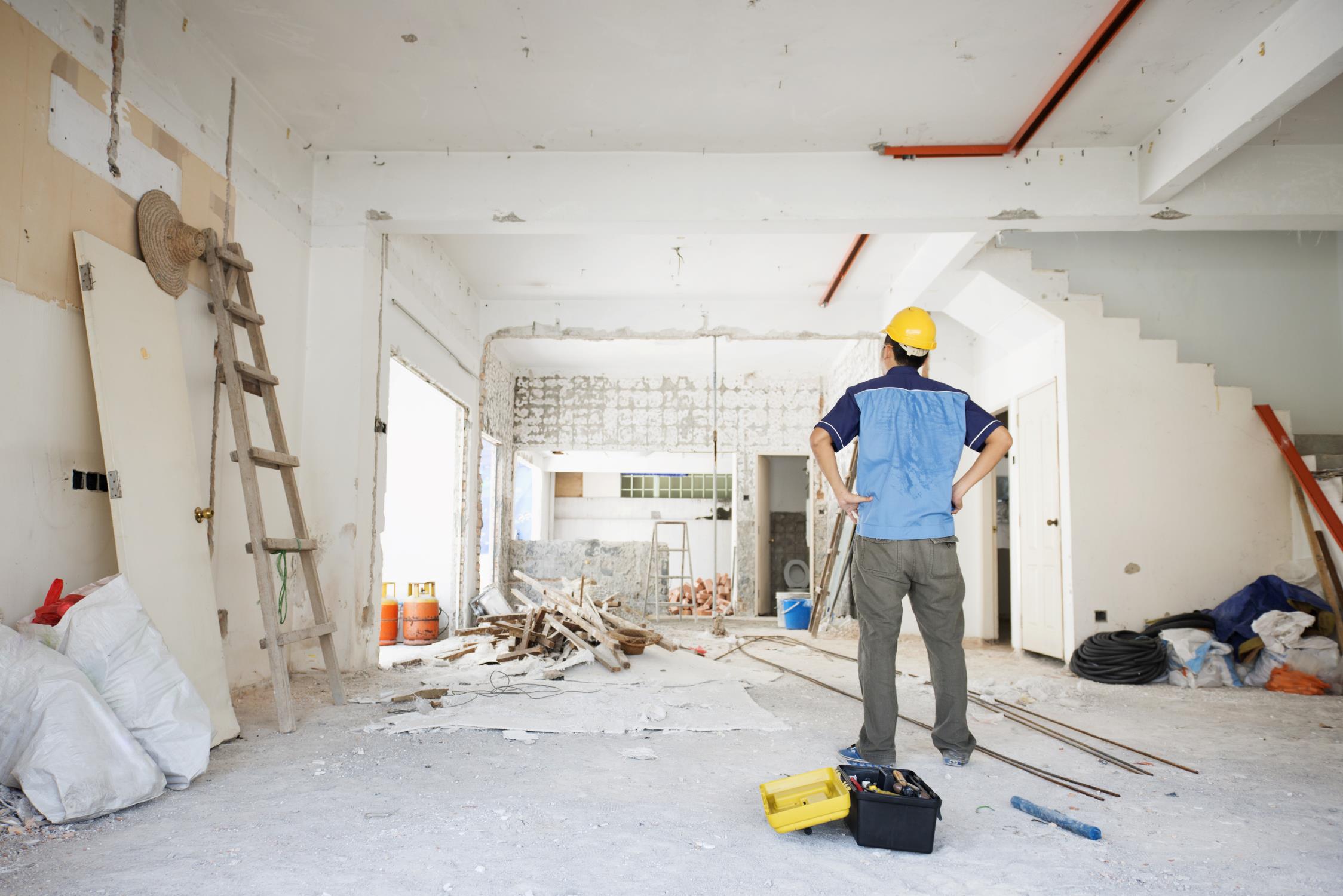


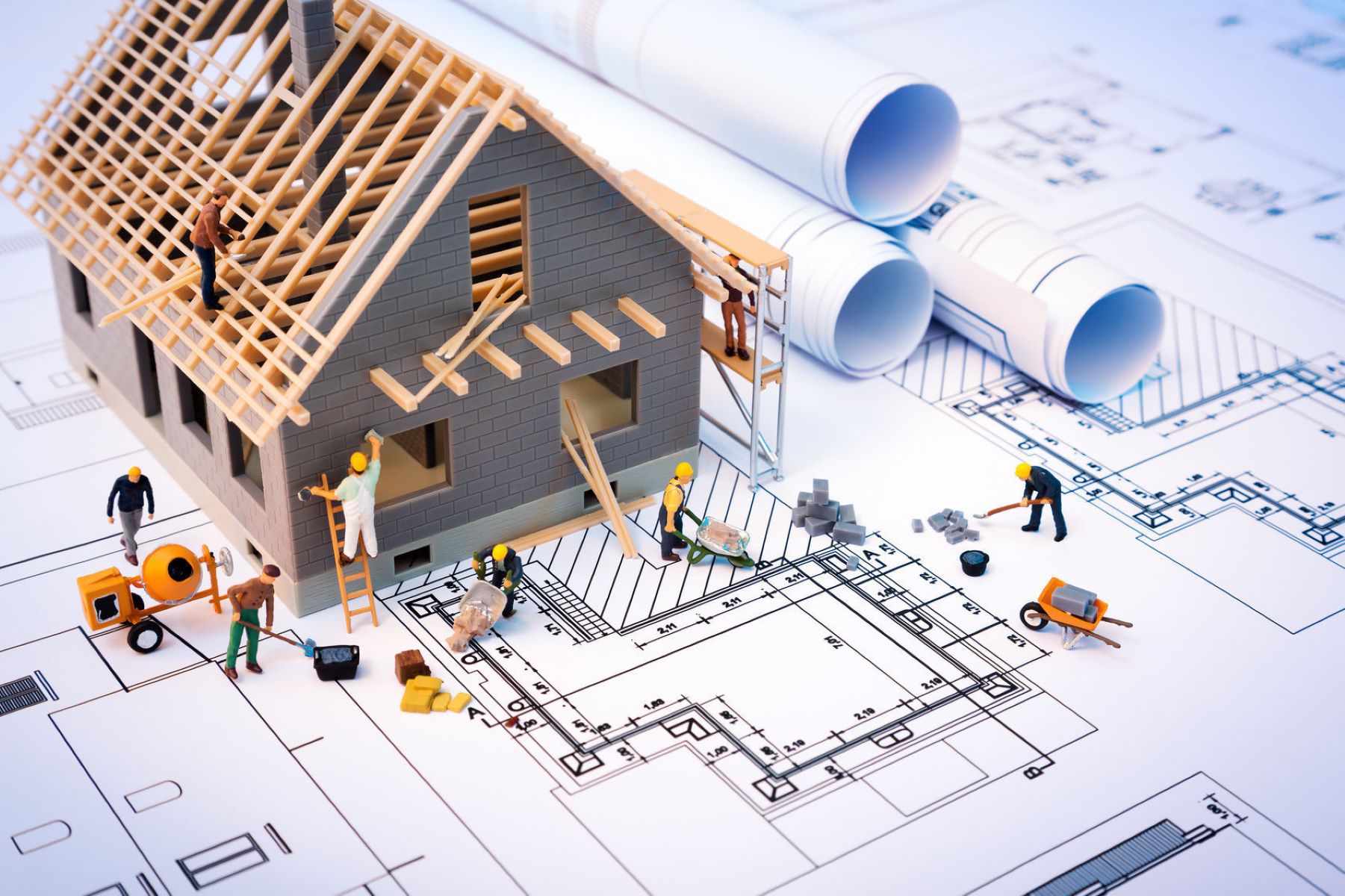
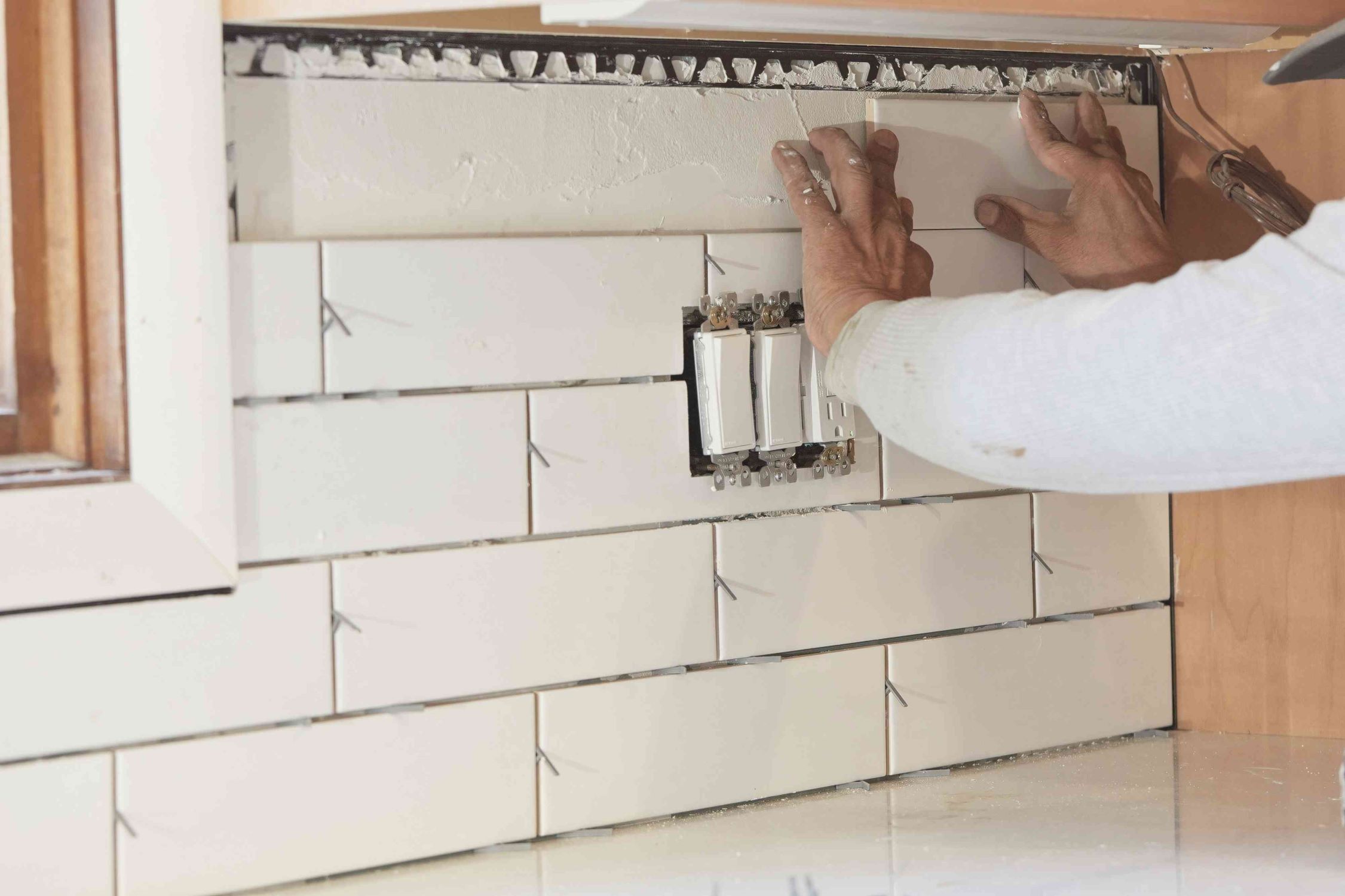
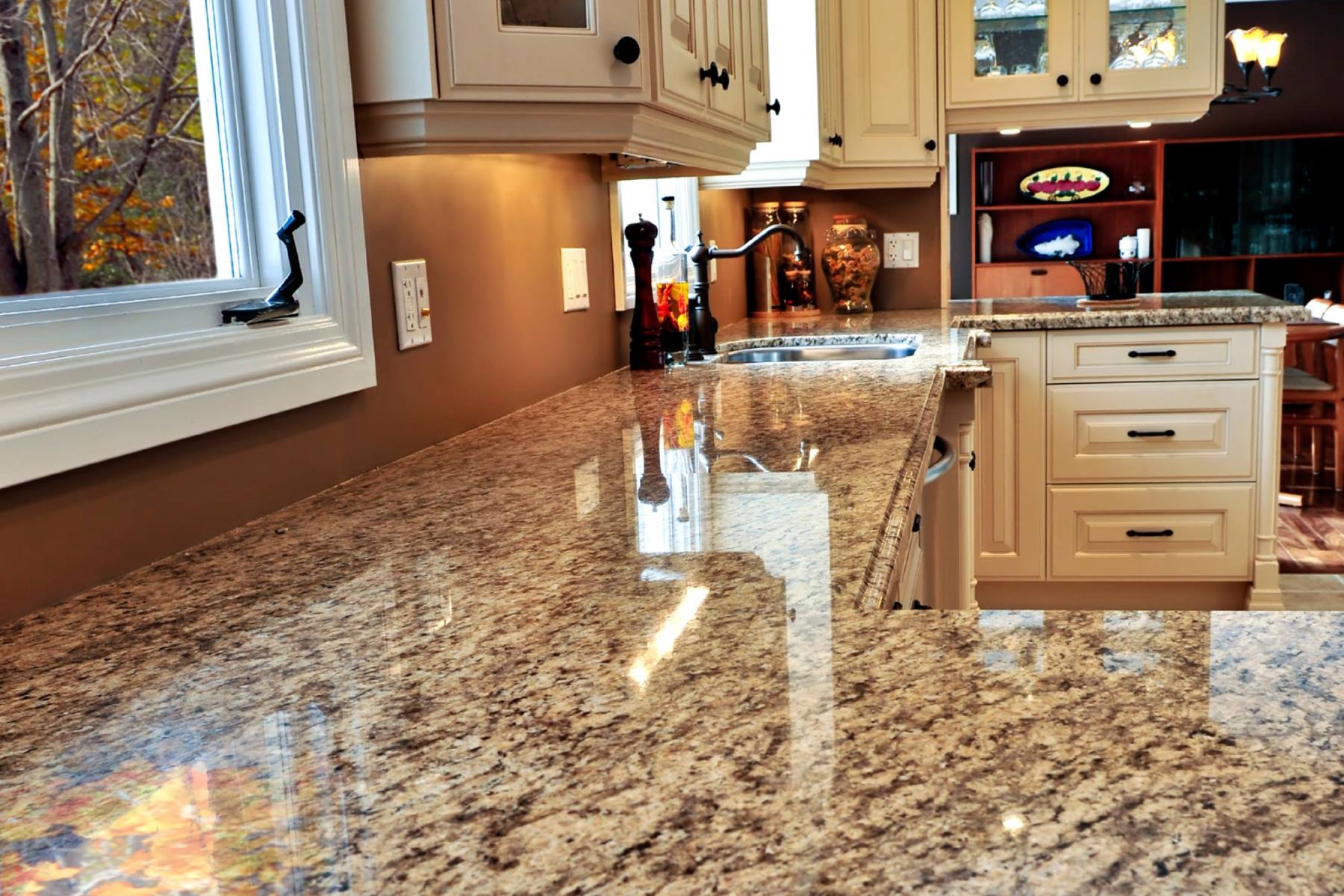
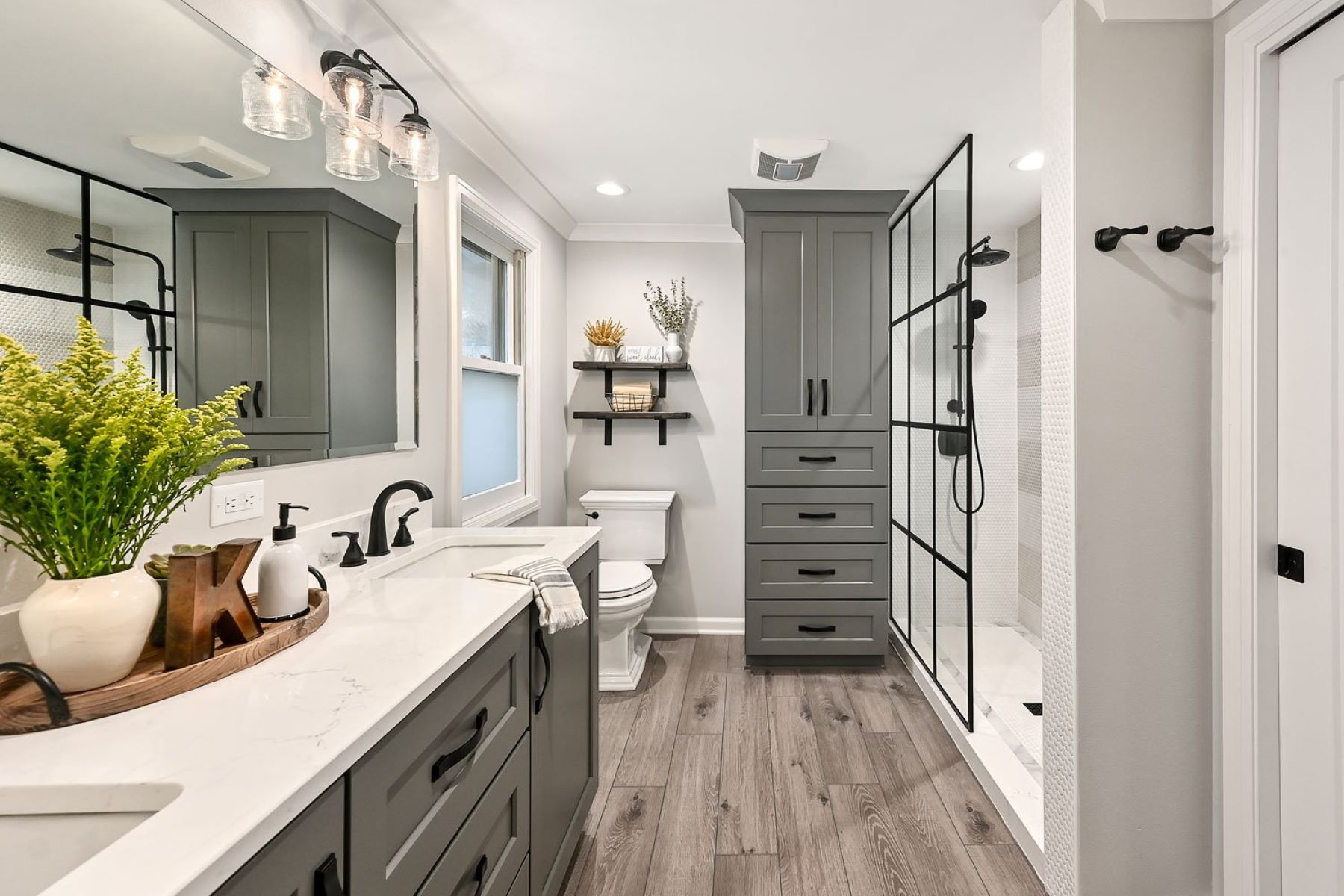

0 thoughts on “Two Story Home Remodeling”